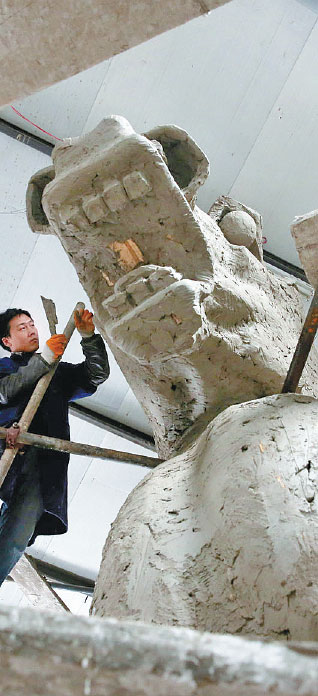
Zhang Bao, a craftsman from Hebei province, works on a giant horse sculpture in Beijing's Heiqiao art zone.
China's urbanization has sparked demand for urban sculpture. Major clients include local governments, the tourism industry and real-estate developers who want to attract and impress customers.
A father of two, Zhang has a no-job-too-small approach to his work, from an 18-meter-tall statue to small Angry Birds models. He can make 200,000 yuan ($32,600) in a good year.
Zhang says a worker on his team earns about 7,000-10,000 yuan a month - more than many white-collar jobs pay in Beijing.
But since last year the business has slowed. The anti-graft campaign, launched by the central government, has meant some industries that profited from abuses of public money have been affected, including the sculpture makers.
"If it is an industrial chain, we belong to the bottom part, and we are affected seriously," says Zhang, who learned the art in his hometown, Quyang county in Hebei province.
Quyang is famous for its traditional stone-carving culture that dates back more than 2,000 years. Stone cutters from Quyang have played important roles in the construction of modern China's major projects like the Great Hall of the People and Chairman Mao Memorial Hall.
The local products, such as ornate white marble statutes, busts and fountains, are popular exports among buyers in Europe and North America.
